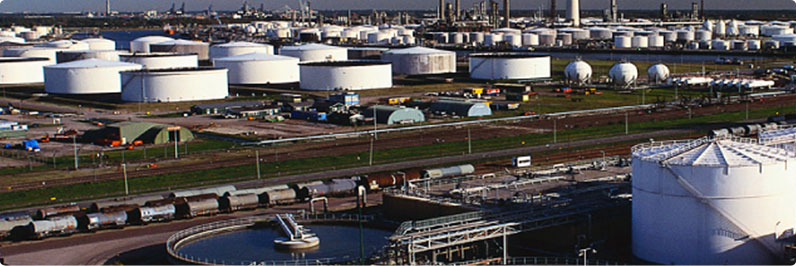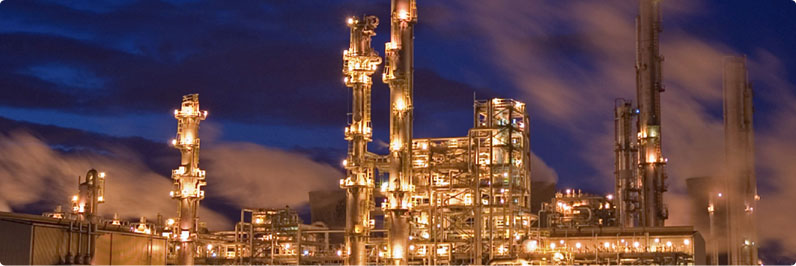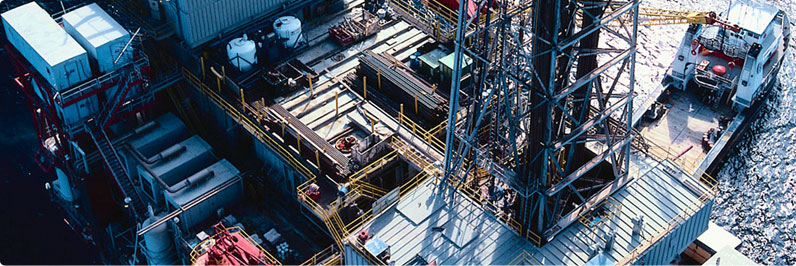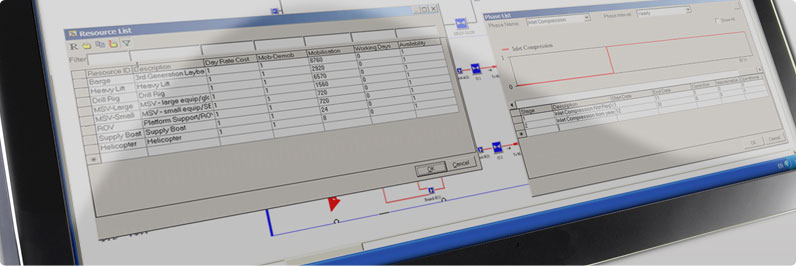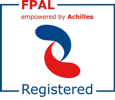PLASMA (Oil and Gas Industry)
General:-
- Powerful visual interface with simple drag and drop techniques;
- Deterministic and stochastic techniques;
- Series, Active Redundancy (Full, Partial or Conditional) and Standby Redundancy (Identical units or Different units);
- Control of the sizing of parallel units as a function of time (i.e. varying levels of effective redundancy);
- Load Sharing;
- Production Availability i.e. throughput estimation;
- System or component importance ranking; It enables the user to identify the systems or components that are the main contributors to Production Unavailability, Total Down Time, Cost, Safety Criticality, Asset Criticality and Environmental Criticality;
- Modelling complex systems using multiple layers of RBDs and PFDs.
Maintenance modelling:-
- Unscheduled, Delayed (e.g. seasonal);
- Maintenance duration and restoration factors;
- Maintenance policies;
- Planned;
- Condition monitoring;
- Opportunity maintenance;
- Services and utilities;
- Job priority;
- Spare parts pools.
Operating Policies
- Makeup (by boosting);
- prioritised (of product exporting);
- monitoring (of production movements);
- Deferred Production;
- Flaring Operations;
- Load Shedding;
- Line packing and
Production Phasing and Transient Data:-
- Control of phasing-in and phasing-out of any part of the logic network;
- Control of the production capacity within any part of the network;
- Control of contract return period (for sales quota make-up) as a function of time;
- Control of branch boost factors as a function of time;
- Control of buffer storage volumes as a function of time;
- Control of export scheduling criteria as a function of time;
- Control of maximum flow in a branch as a function of time;
Life Cycle Scenarios
- Economic Modelling aspects:- CAPEX, OPEX, NPV etc.;
- Performance and asset optimisation.
Logistics
- FPSO and Subsea;
- Tanker Export Modelling:- Transport mode (sea, road or rail), Operations Mode (define whether dealing with export or import), Berth data (dual tanker loading operations);
- Number of shuttle tankers in the fleet, Carrying capacity, Range, Early and Late arrivals etc.;
- Iconic animation (moving ships, etc.);
- Operations details of shuttles;
- Maintenance Vessel;
- Weather Module:- Location (reference to geographical location of shuttle loading facility)
- Seasons (default given for Northern Hemisphere)
- Weather Data Matrix (comprising cumulative probability of nominated wave heights per season and the associated average of occurrence of this range)
Other modelling details
- Interactive construction of Network, Fault Tree or Event Tree diagrams;
- Multiple sources and production profiles;
- Sub-system or pagination facilities for large Network, Fault Tree and Event Tree diagrams;
- Import and export facilities;
- Interface with Excel spreadsheets. Effectively allowing the user to export and import data to and from other spreadsheets;
- Multiple Sales Quotas;
- General failure behaviour of an equipment i.e. bathtub curve.

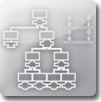 Fault tree package
Fault tree package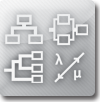 RAM Simulator
RAM Simulator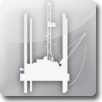 Plasma - Oil and Gas
Plasma - Oil and Gas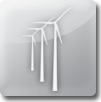 Plasma - Wind (renewable)
Plasma - Wind (renewable)